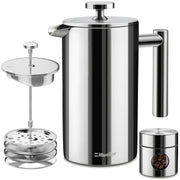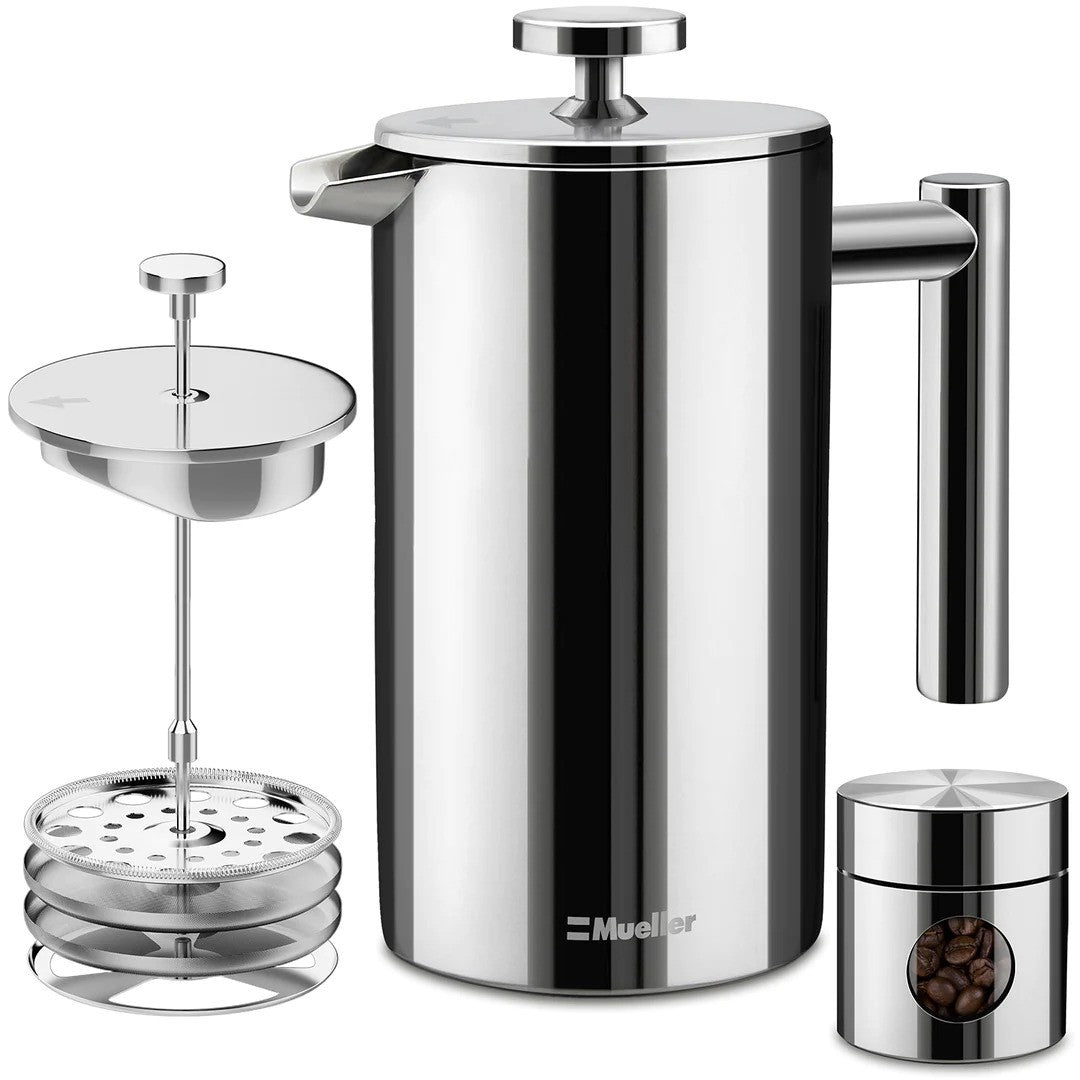Try Siphon Brewing
Almost nobody uses a siphon pot to brew coffee. At one time, before automatic drip brewers, every restaurant and café had a Silex siphon pot brewing coffee. They were visually interesting because the waitress put water in the glass pot, on an electric burner, and then sealed another pot on top containing coffee grounds. As the water heated it vaporized and forced the water through a tube into the upper pot. The hot water was mixed with the coffee grounds and after a short extraction period the pot was removed from the heat. As the air in the lower pot cooled, the coffee in the upper pot was sucked down through a cloth filter into the lower pot, creating a pot of well brewed coffee.
Siphon brewers do a great job extracting the flavors of the coffee beans. However, they are slow and are difficult to clean up.
There are two types of siphon brewers, 1) balance beam brewers with the grounds on one side of a beam and the water on the other, and (2) double bell brewers with a one pot sealed on top of the other. Balance beam siphons are harder to clean and are more for show than just brewing coffee.
There are different ways of heating the water including alcohol burners, butane burners halogen lights, propane, gas, electric burners, and automatic electric heaters.
Brewing Procedure
The instructions all recommend that you fill the bottom bell with water, seal the top bell on to the bottom bell and then heat the water, The problem with this procedure is that low temperature water will be forced into the coffee slurry as the water heats up. Brewing below 200 degrees F results in sour bitter coffee. As the water heats up to 200 degrees it will mix with the low temperature brewed coffee, canceling some of the bad flavors. A better way to brew is to let the water in the lower pot heat up to 200 degrees and then seal the upper pot onto the lower pot. This must be done carefully to avoid burns.
After the water is forced into the upper pot, we let it agitate the grounds for about 2 minutes then pull the pot off the heat, The coffee will then be sucked through a cloth or metal filter into the lower carafe, The result is a close to four-minute brew time.
Avoiding Disaster
Siphon pots can be temperamental. You must be careful! Hot water and hot coffee can cause third degree burns with just a few seconds of exposure,
If you let all the water flow up into the upper chamber, the lower pot can crack from excessive heat. Juggling a cracked pot with another carafe of hot coffee on top is dangerous.
If the hot coffee draws down too fast it can operate like a water hammer and blow out the bottom of the lower pot. We have lost several Hario siphons when the coffee came down too fast.
Also, it is possible to superheat water past the boiling point. Most siphons have a chain hanging down from the top pot so that the water won’t superheat. If the water does superheat, it can result in a blowout with scalding water and coffee grounds flying out the top all over everything. You can keep the top pot loosely on the bottom pot with the chain hanging down. Also, you can put something in the bottom carafe that will cause the boiling water to bubble.
If any of this worries you, buy an automatic siphon.
Recommendations
Many of the siphons are almost works of art with handblown thin glass carafes. Unfortunately, they are also delicate and break easily. They do not do well when dropped or in the dishwasher. In investigating siphons, we concentrated on ones that would survive normal home use.
We have two recommended siphons, (We do not have any affiliate relationship with anyone. Our recommendations are our personal choices.)
 Yama Glass 5-Cup Stovetop Siphon $70
Yama Glass 5-Cup Stovetop Siphon $70
The Yama Siphon heats water using your electric or gas stove. It has a flat base that is stable on the stove top or the counter.
The glass is laboratory grade borosilicate glass that is tough and less likely to break than the glass used in other siphons.
It has a sturdy handle for moving the siphon on or off the stove. It makes up to 32 ounces of coffee (4 eight-ounce cups).
The downside is you need to stand by as the water heats and brews. In addition, the carafes and filters must be cleaned after each use.
 KitchenAid Siphon Coffee Brewer $229
KitchenAid Siphon Coffee Brewer $229
The Kitchen Aid siphon is a “set it and forget it” device. Once you load the bottom with water and the top with ground coffee, and plug the cord into an electrical outlet, it will heat the water, brew the coffee, turn off the heat and filter the coffee back into the lower carafe. (If you want consistent 200° F water brewing you can delay locking on the top bell until the water in the bottom carafe is at 200° F.)
The carafes are made of thick glass that resist cracking. It will make up to 42 ounces of coffee (5 8-ounce cups)
The downside is that the bottom carafe has an attached induction device, and it is heavy. (Like an electric water pot) In addition, the carafes and filter need to be cleaned after each use.
The KitchenAid Siphon is out of stock at Amazon. It can be found at other retailers. (If you must order an automatic siphon online right now, you can buy a Tiger Siphonysta Automated Siphon. It is in stock at Amazon and is only $499.)
You probably won’t use a siphon coffee brewer for everyday coffee. However, when you have the time and the right coffee the final product is well worth the effort.
Bon Appetit


